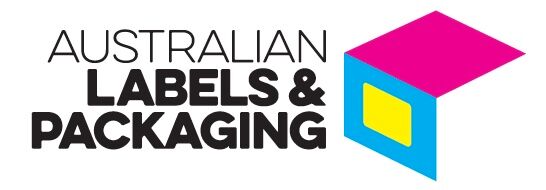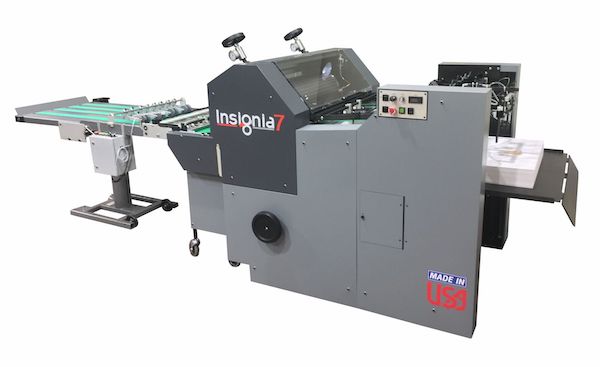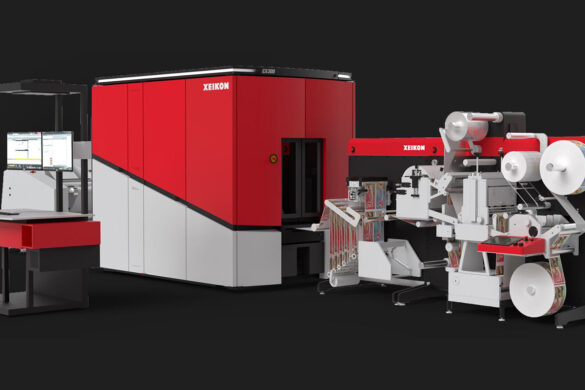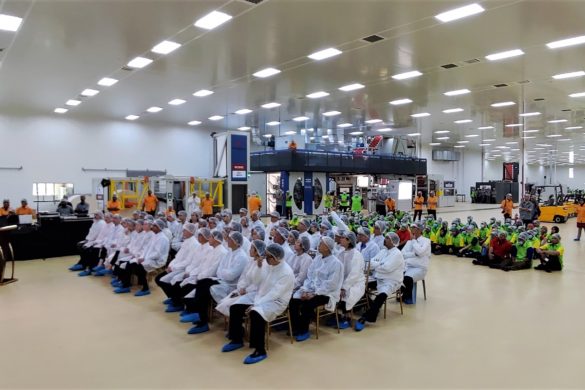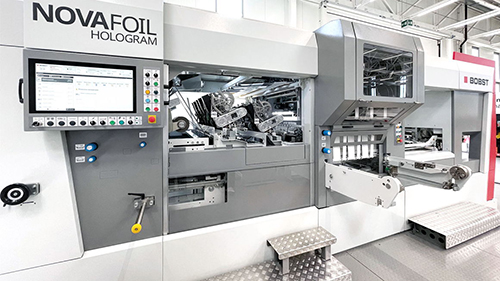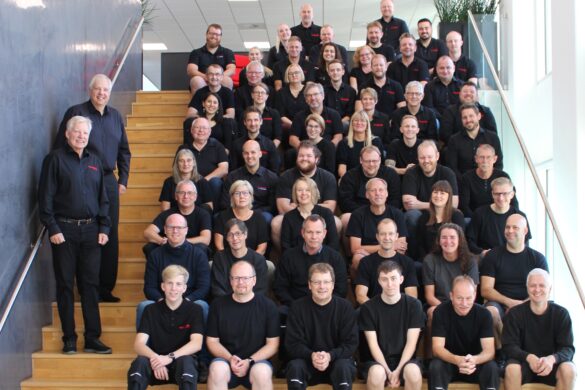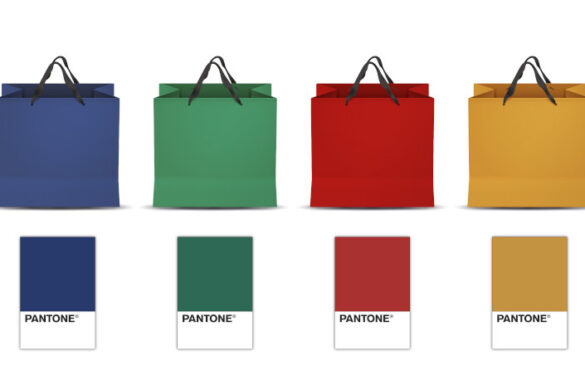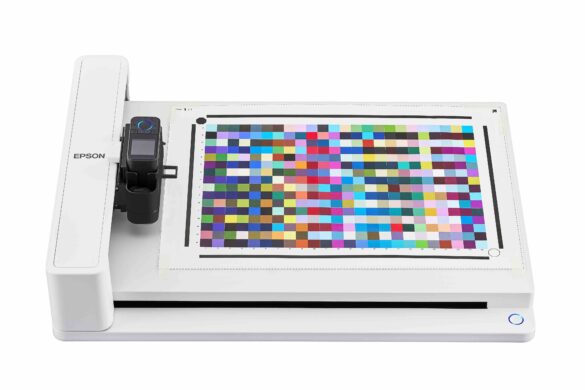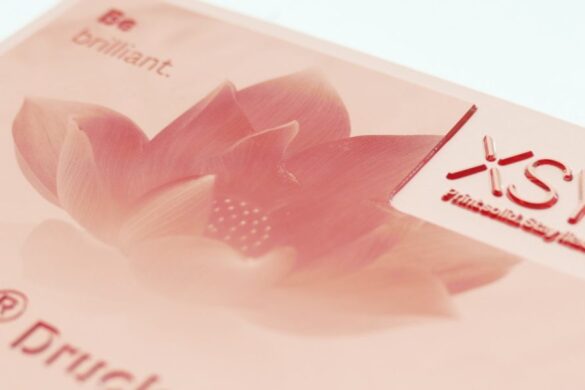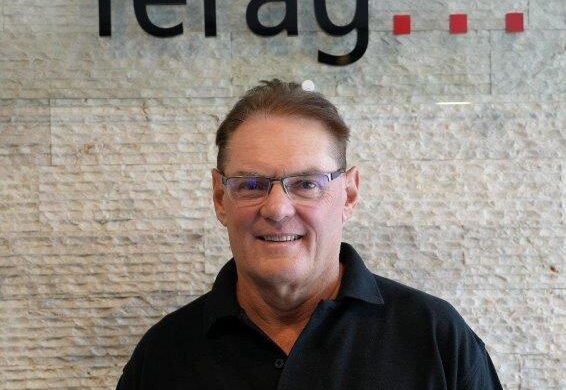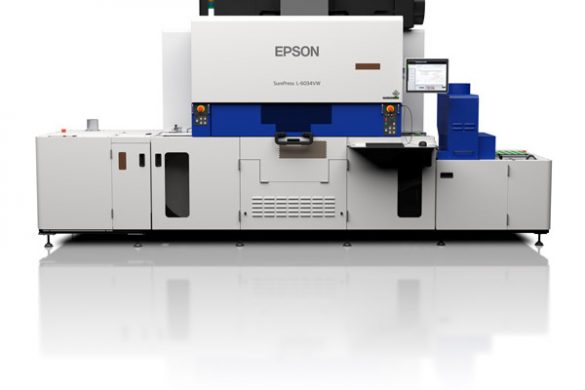The Insignia rotary die-cutter is a breakthrough in rotary die-cutting and packaging technology from Rollem International, built 100% in the USA using all American-sourced components.
The Insignia Series represents a new class of sheetfed rotary die-cutters capable of die-cutting, kiss-cutting, embossing, perforating, scoring and cut-scoring a range of papers, plastics, magnetic material, PVC, styrene and polypropylene. It is the only machine in its class capable of die-cutting up to 30 pt. in thickness.
Available in four models to meet all press sizes, Insignia is ideal for folded cartons, promotional products, garment and industrial tags, labels, nameplates, shaped direct mail, photo products, pocket folders, stickers and more.
Single magnetic vs. dual magnetic cylinder
Each Insignia machine contains two cylinders; an upper and a lower. The upper cylinder is always magnetic and houses a flexible die, and a choice is offered with the lower cylinder between a matching magnetic cylinder or a hardened, solid anvil cylinder. The difference between these two systems is that a dual magnetic ‘H model’ machine can accept a paired set of ‘male/female’ dies to cut with, whereas a single magnetic machine will utilise a single die tool and cut against a precision-ground lower anvil cylinder.
A single magnetic system is recommended to produce pressure-sensitive kiss-cut work or cut products. This configuration is ideal when straight die-cutting, or when kiss-cutting to an adhesive liner.
A dual magnetic system is commonly utilised when running packaging products or folding carton work. This can be converted into running with a single cutting die using a blank jacket on the lower cylinder when looking to run at cut products or kiss-cut work. A set of dies can be inverted on the cylinders to run the material face down for back slitting.
Common applications for single magnetic machines include (but are not limited to); shaped greeting cards, packaging inserts, decals and pressure sensitive applications cutting to a liner, garment tags, event passes, invitations, door hangers, bottle neckers, ID card carriers and much more.
Applications commonly produced requiring a dual magnetic machine could consist of channel-scored folding cartons, presentation folders, embossed envelopes, uniquely shaped direct mailing pieces, POP displays and fold-over greeting cards.
Flexible magnetic dies vs. steel-rule dies
Flexible dies have been in use for 30+ years on converted web printing presses to kiss-cut adhesive materials. Over the years since, flexible die technology has advanced much further into die-cutting of substrates as thick as 0.76 mm.
Some advantages to utilising flexible die technology over steel rule / platen cutting tools:
- Because flexible dies are produced via CNC machine, the tolerances they are held to are far tighter than that of a steel rule die.
- Intricate die-cutting patterns, multiple blade heights to die-cut and kiss-cut, perforating blades, creasing elements and embossing patterns can all be placed within a flexible die.
- After flexible dies are engraved via these CNC machines, they can be either laser hardened for extended die life, or coated for various adhesive cutting applications to prevent substrates from adhering to the die tools. The lifespan of the dies will depend on the substrate being cut and the finishing treatment they receive.
- Produced to tolerances of less than 0.02 mm – flexible dies are extremely precise and thus allow for maximum accuracy when kiss-cutting to an adhesive liner.
- Extended die life is achieved when cutting against an anvil cylinder.
- Flexible die blades can be as close together as 1.4 mm and obtain a radius as tight as 1.27 mm.
- Non-standard perforation TPI as well as shaped or curved perforation blades and multi-height blades within the same die tool are all possible.
Delivery options
The Insignia machines can deliver either a full sheet of die-cut or kiss-cut product, or strip the die-cut pieces from the matrix or skeleton of the sheet and deliver them onto a slow-moving shingle delivery table, or into a vertically receding stack. Product delivered onto a shingle table can vary from a single lane of product up to 6-12 lanes depending on the size of the piece being cut. Interior holes within the die-cut product can be removed with the Insignia Air Blast Kit.
Another option for delivering stripped-out product is into a vertically receding StackMaster delivery system capable of receding up to 61 cm+ deep. The product is delivered into a removable cassette for minimal downtime.
Insignia machines can perform batching functions in two places within the system; a variable batching system functioning within the feeder, or a static batch system housed at the delivery. A variable batching system is great for varying quantities of pieces within each order. This system relies on a printed mark as a trigger point. A static batching system is effective for fixed quantities of product. This method of batch is accomplished at the delivery end of the Insignia system which allows for easy quantity separation.
“Insignia die-cutters are a great way to offer your customers flexible, affordable, high-quality custom die-cutting in-house,” observes Tom Ralph of Graph-Pak, the Australian agent for Rollem. “The Insignia provides entry into high-value packaging and commercial markets enabling greater in-house control over production and turnaround times.”
